Dedication: For Krinkle, because I think he’d appreciate the juxtaposition
This is one of my favorite quotations from literature:
And it is a strange thing that most of the feeling we call religious, most of the mystical outcrying which is one of the most prized and used and desired reactions of our species, is really the understanding and the attempt to say that man is related to the whole thing, related inextricably to all reality, known and unknowable. This is a simple thing to say, but the profound feeling of it made a Jesus, a St. Augustine, a St. Francis, a Roger Bacon, a Charles Darwin, and an Einstein. Each of them in his own tempo and with his own voice discovered and reaffirmed with astonishment the knowledge that all things are one thing and that one thing is all things—plankton, a shimmering phosphorescence on the sea and the spinning planets and an expanding universe, all bound together by the elastic string of time. It is advisable to look from the tide pool to the stars and back to the tide pool again.
—J. Steinbeck and E.F. Ricketts, Log from the Sea of Cortez
These words are never far from my thoughts when I contemplate the nature of life on planet Earth. And with this week’s release of the first images from the James Webb telescope, they rocketed back into my brain with full force.
To my eye, the most striking of these first images from James Webb is this one, of the Carina Nebula. It is just breathtaking.
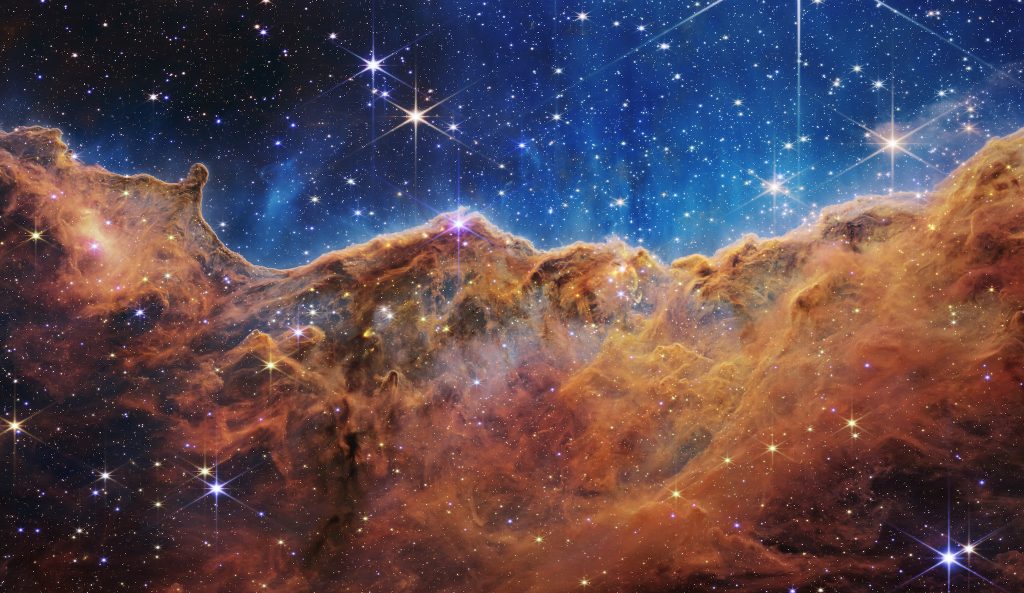
2022-07-12
Public domain by NASA
When I started poking around NASA’s website I kept finding images that reminded me of my tide pool photos. So I want to share a few comparisons.
Stephan’s Quintet
NASA also released this photo of Stephan’s Quintet, a group of five galaxies found in the constellation Pegasus. Only four of the five galaxies are visible in this image.
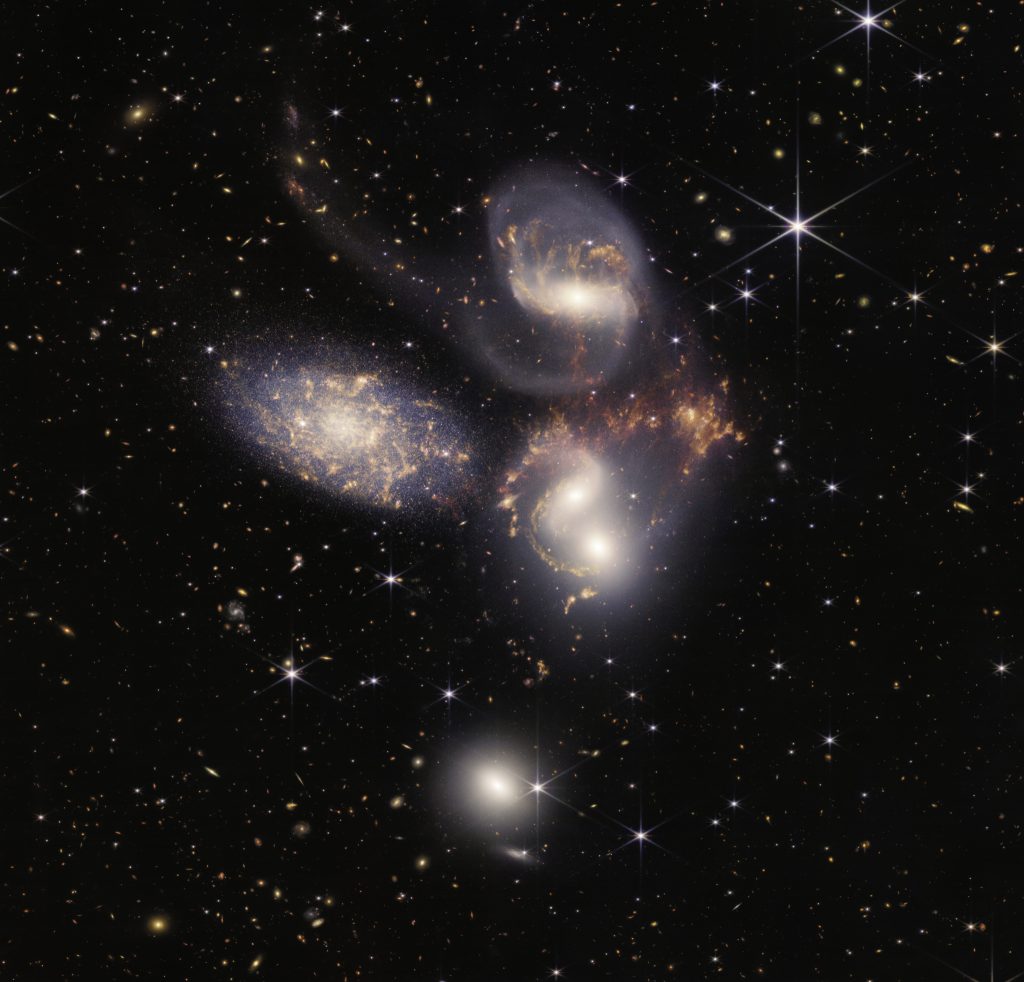
2022-07-12
Public domain by NASA
Those swirling white masses are vast sweeps of dust and gas. But to my mind they resemble spawning male marine invertebrates, of which I have seen more than any normal person. See what I mean?
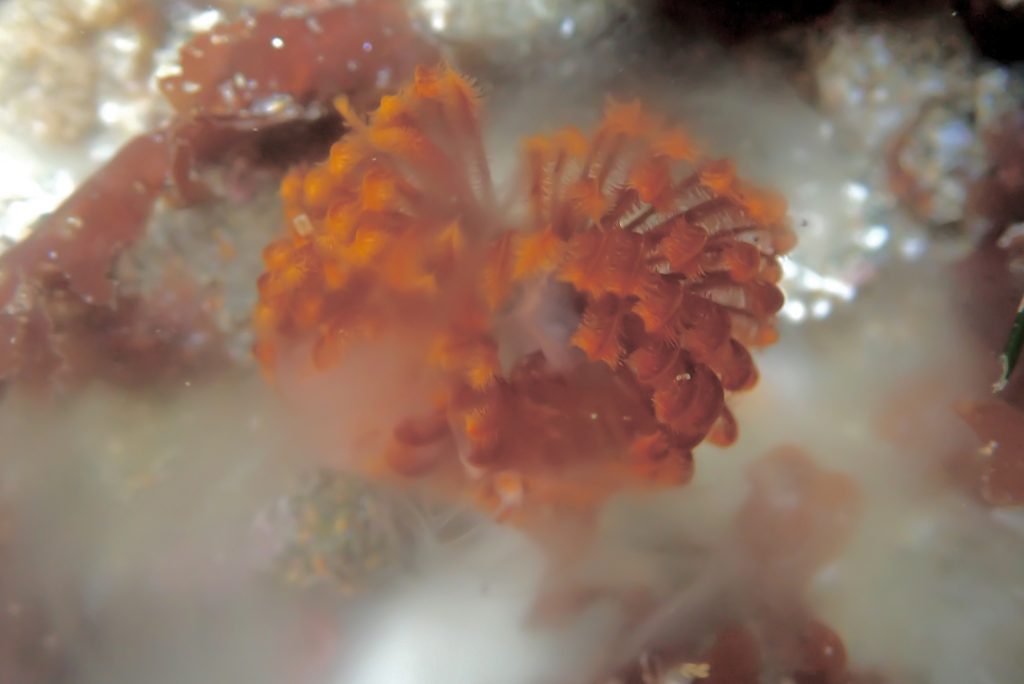
2021-04-24
© Allison J. Gong
and
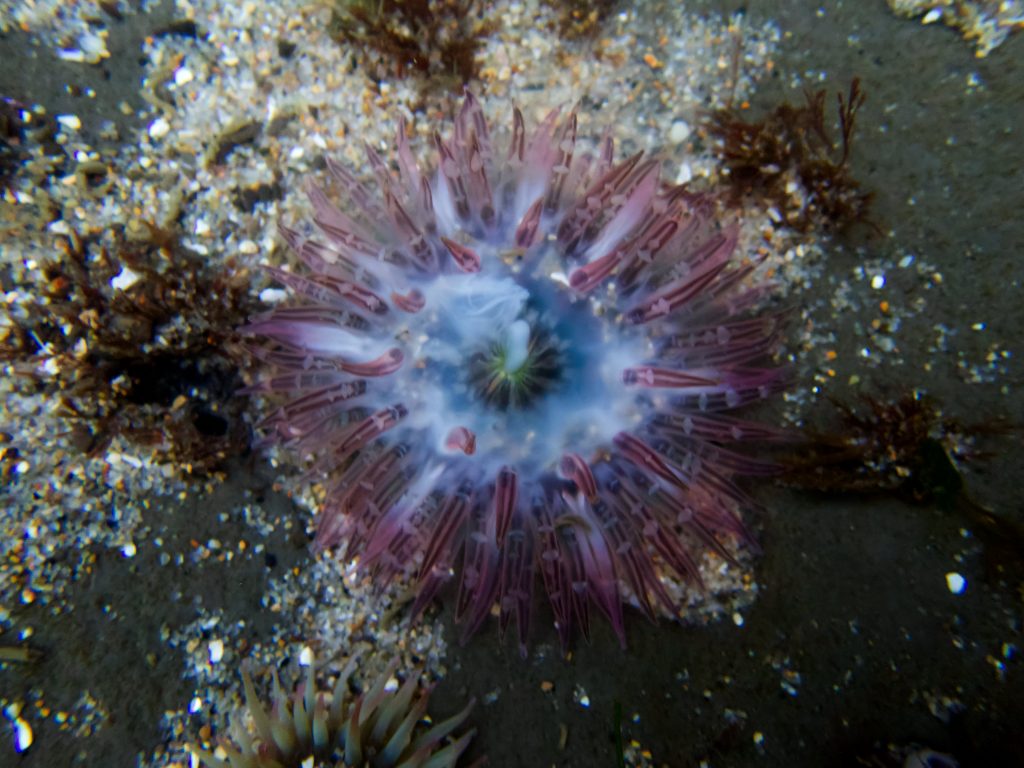
2016-04-09
© Allison J. Gong
Given all the justified hype over the images taken by James Webb, it’s sort of easy to forget about the Hubble Space Telescope. But Hubble has been taking spectacular images for years, giving humanity some of our first and best images of the universe far from home.
Abell 370
In the archived data from the Hubble Space Telescope, I found several eye-catching photos. This one, of Abell 370, reminded me of plankton. Abell 370 is another cluster of galaxies. It contains hundreds of galaxies held in a group by their mutual gravitational pulls. I love all the shapes of these galaxies, which do indeed look like plankters!
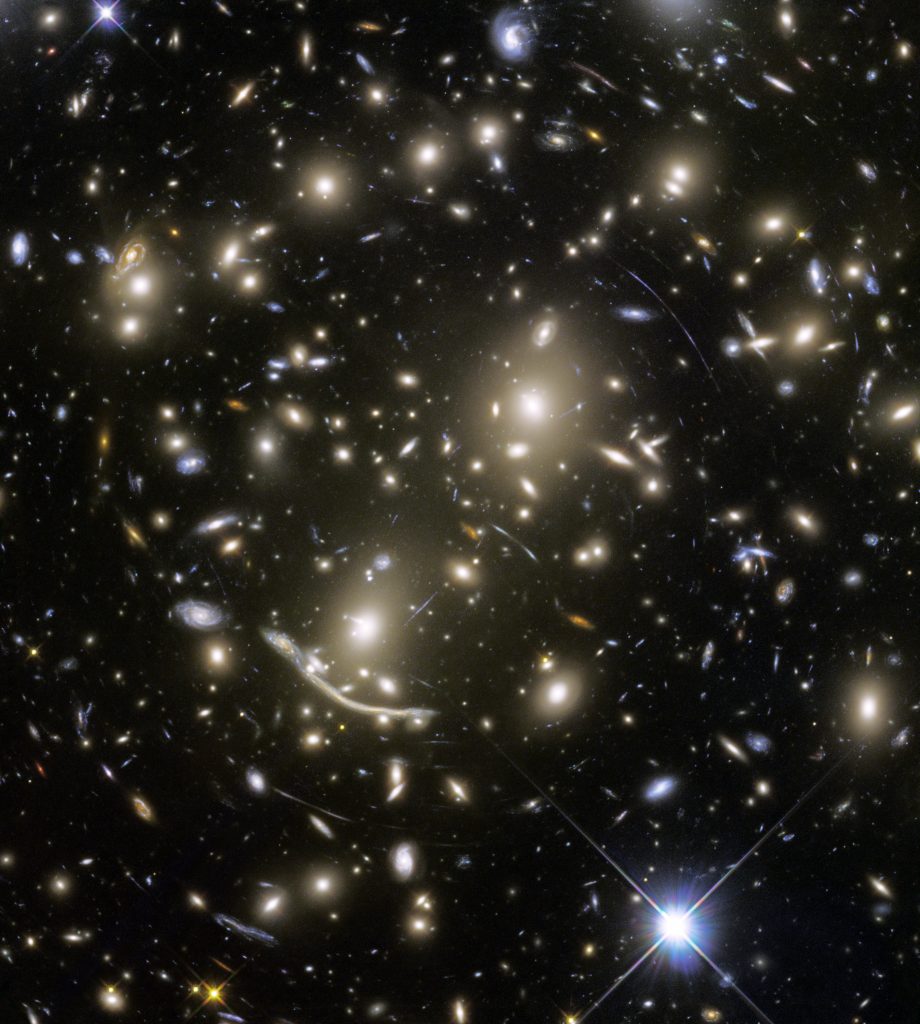
Public domain by NASA
Here’s a plankton sample in a bowl:
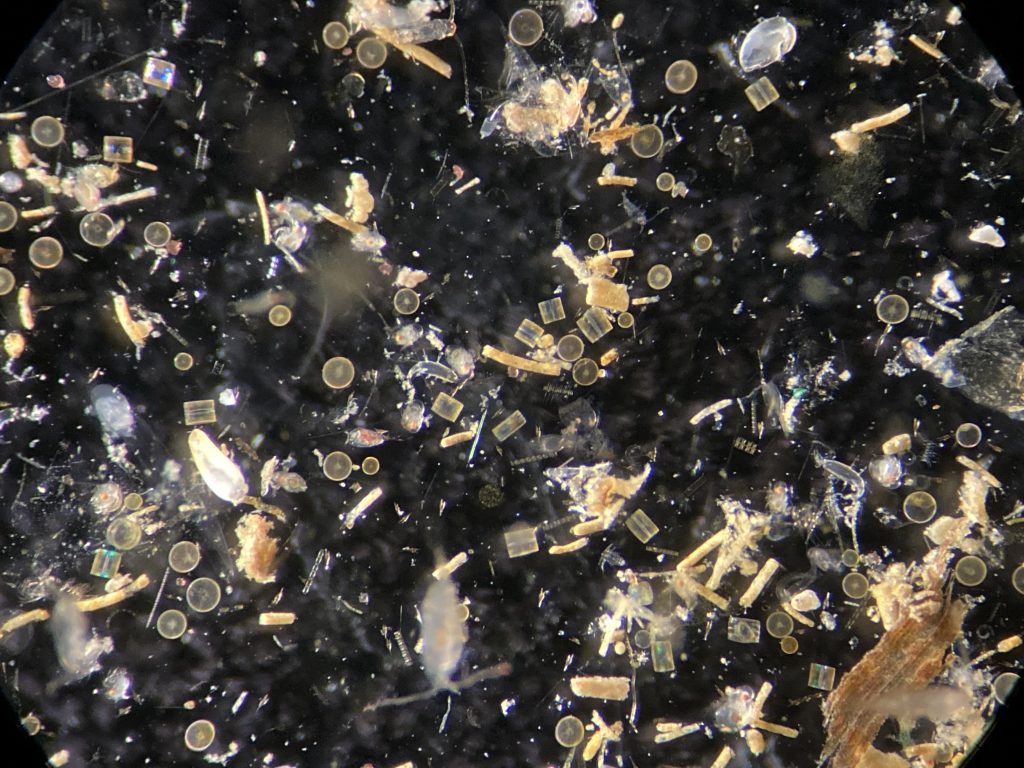
2022-03-21
© Allison J. Gong
And doesn’t this radiolarian look like it belongs in Abell 370?

2020-05-06
© Allison J. Gong
Prawn Nebula
In 2021 the Hubble Space Telescope took a photograph of the Prawn Nebula. As with most of images of amorphous things in space, I can’t explain why the Prawn Nebula has that name. Most of the light it emits is in wavelengths that we cannot see, so the Prawn Nebula is essentially invisible to the naked eye. This image from Hubble was taken in infrared light, and is beautifully colorful.
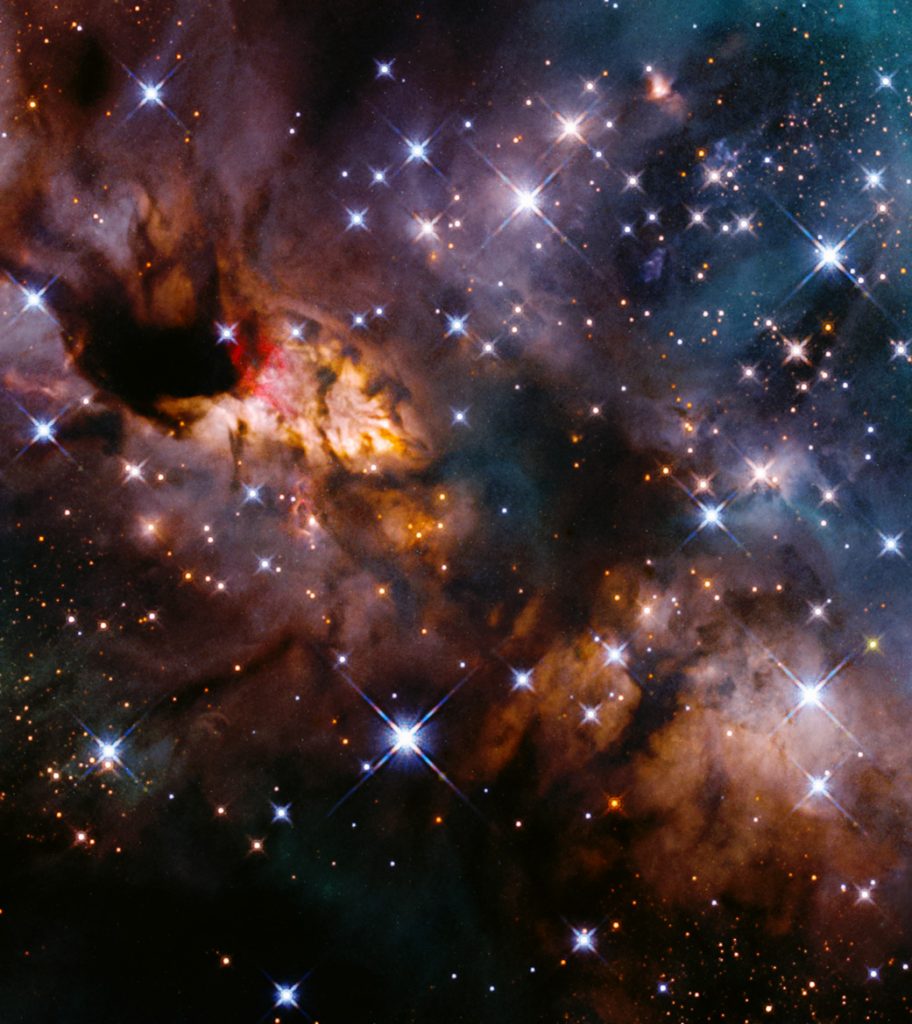
Public domain by NASA
The colors in this nursery for baby stars reminds me of the ones I see in some of our iridescent algae in the intertidal here on Earth.
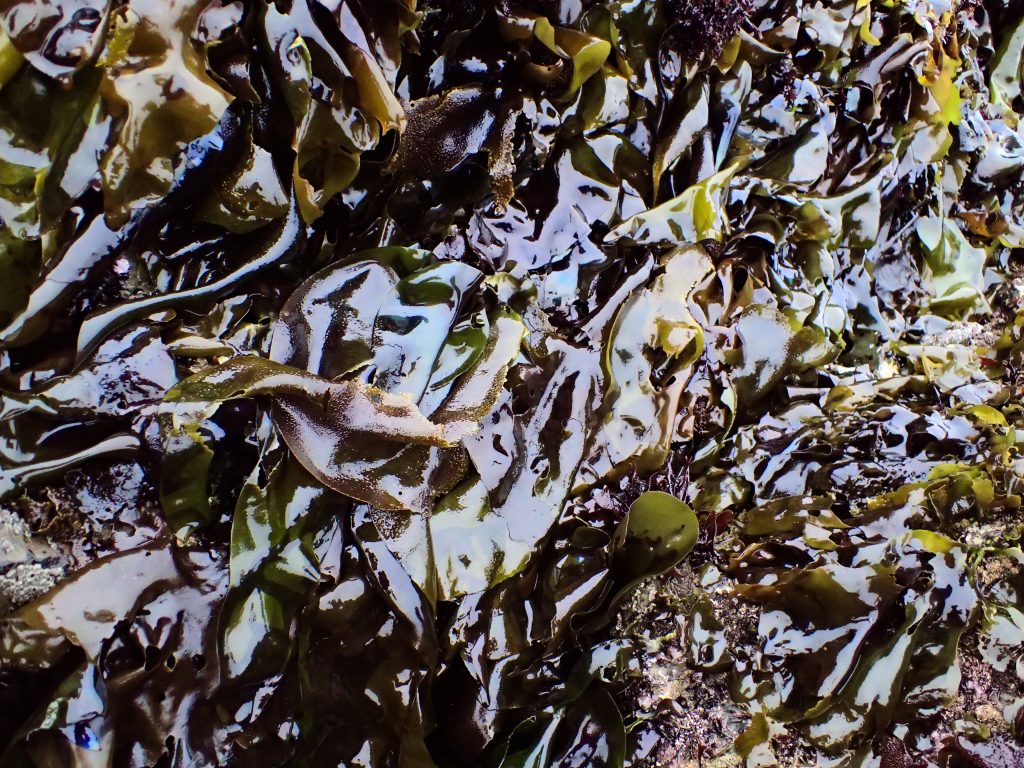
2019-06-19
© Allison J. Gong
Baby stars
Hubble photographed this area of space, where new stars are being born, back in 2015. This region, designated NGC 2174, is in the constellation Orion.
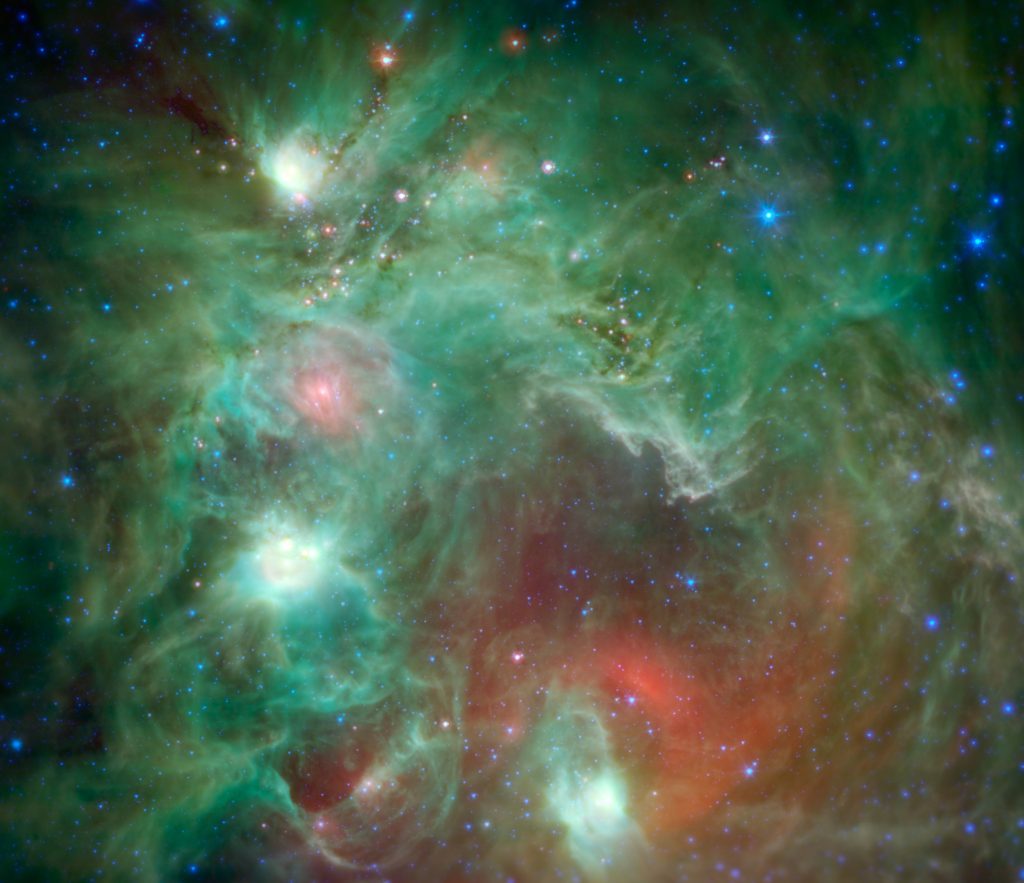
Public domain by NASA
At the peak of the summer growing season the sea lettuces (Ulva spp.) look similar.
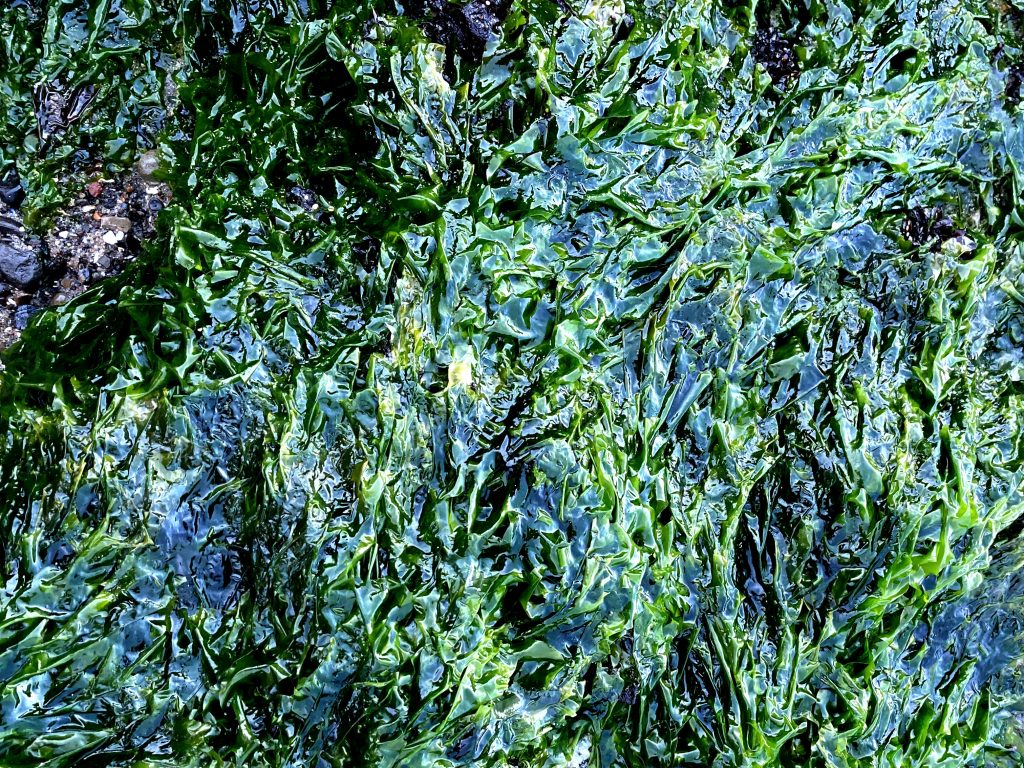
2020-06-09
© Allison J. Gong
Jupiter
In 2016, NASA’s Juno mission arrived at its target, the largest planet in our solar system. The vehicle carries a camera called the JunoCam, which sends data back to Earth. NASA collects the raw images and makes them available to the public for free, to be processed and edited. The public is thus making an ongoing contribution to science. The JunoCam is still operational. NASA also invites amateur astronomers to add their own photos of Jupiter, taken from personal telescopes, to the database of images.
Anyway, here’s a photo of Jupiter, taken by JunoCam and processed by Brian Swift:
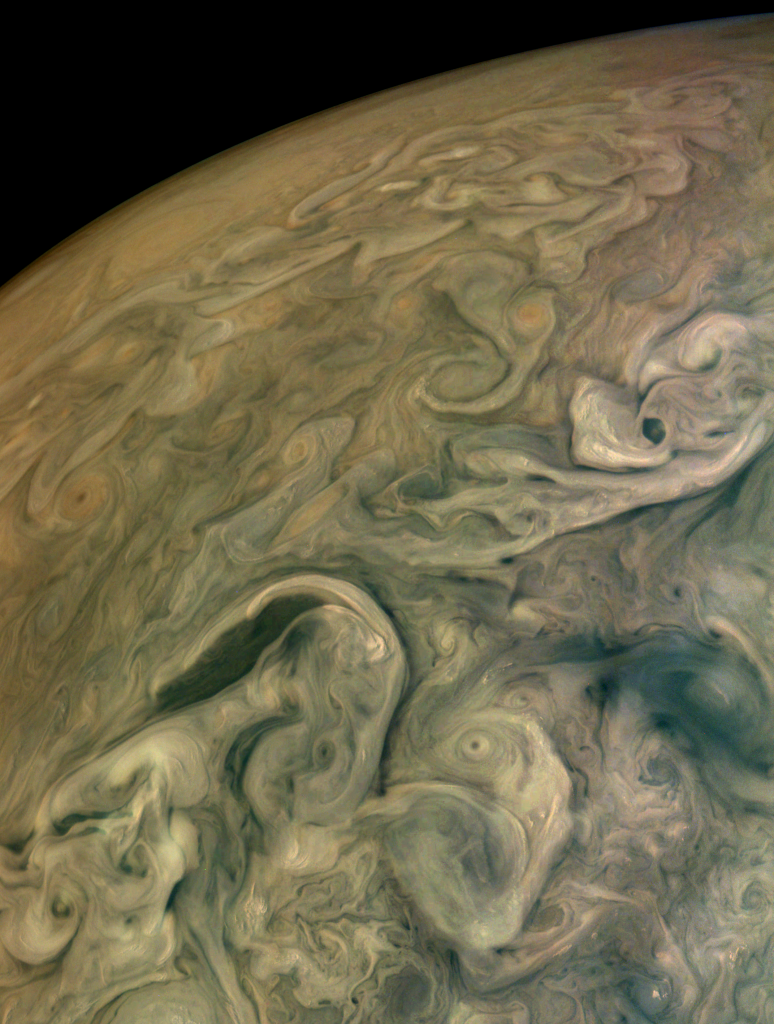
All of these lovely swirls brought to mind the patterns I sometimes see on the surface of a tide pool.
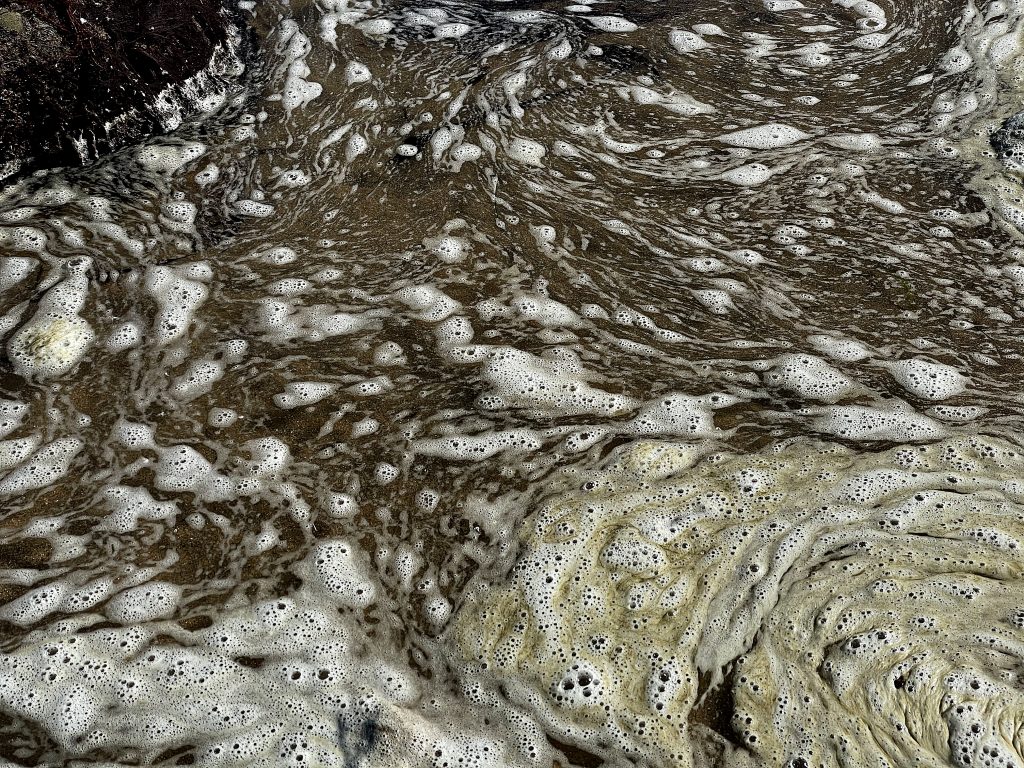
2021-04-29
© Allison J. Gong
And now, having spent several hours marveling at the beauty of the stars as captured by the Hubble and James Webb telescopes, I take Steinbeck’s and Ricketts’ advice and return to my tide pool image library, where I see other swirling patterns that I did not find in any of the space photos. But I hope that they will be found out there, some day.
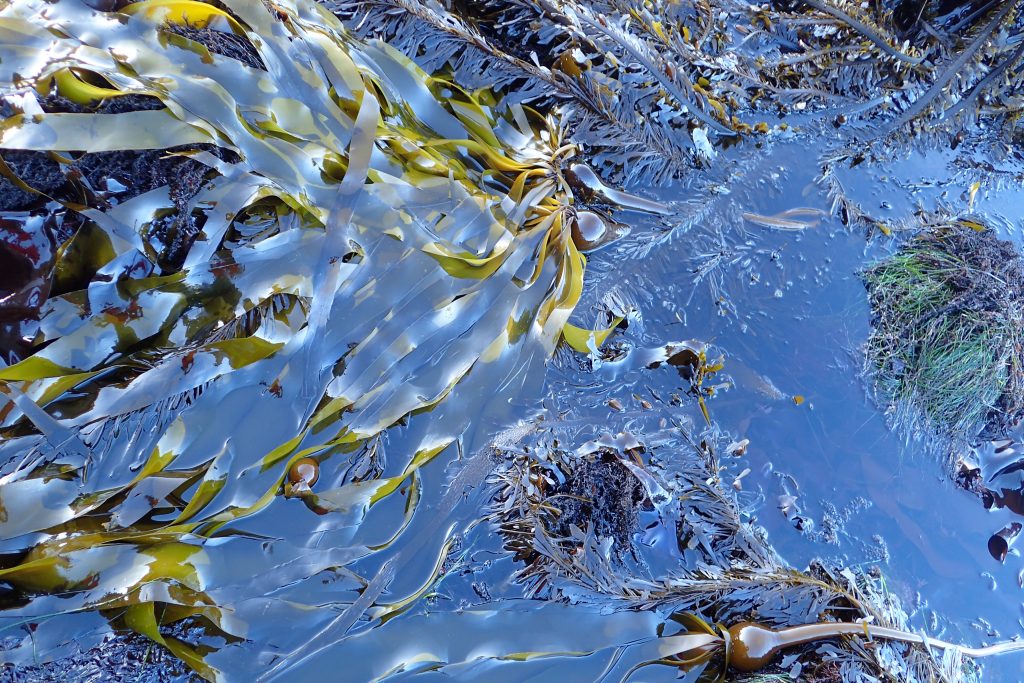
2017-07-11
© Allison J. Gong
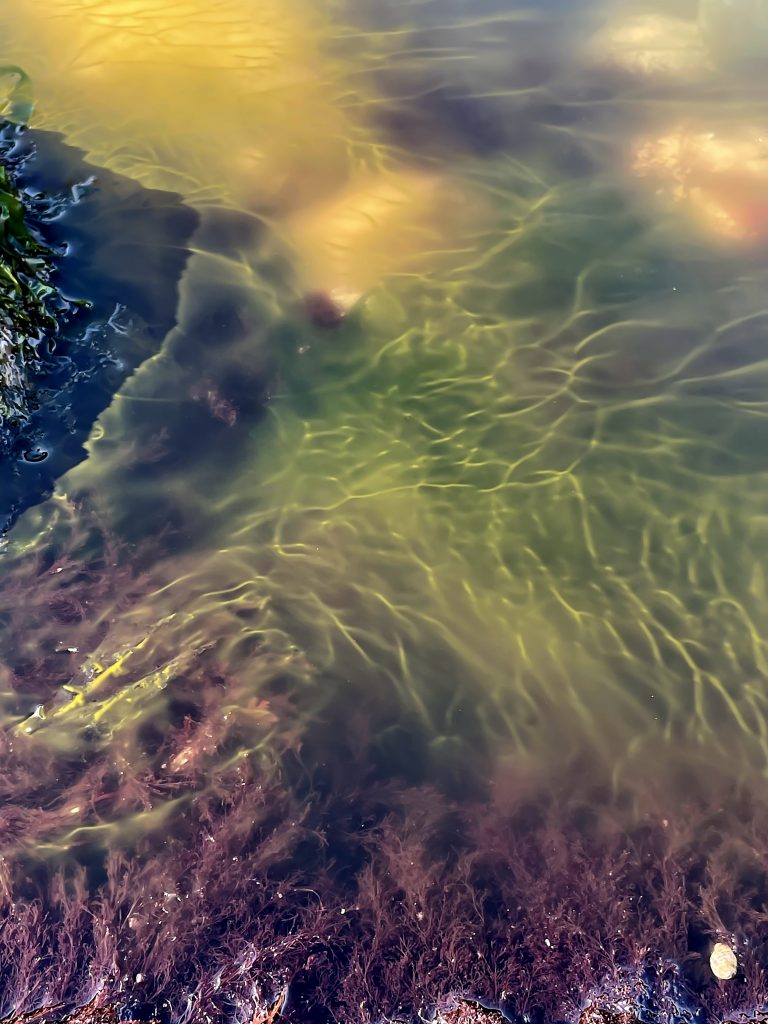
2021-04-29
© Allison J. Gong
By all means, look up at the stars and marvel at the vastness of the universe. But don’t forget to also look down at where your feet are and marvel at the intricacy and exquisite beauty of what we can experience with our human senses.

Absolutely wonderful thought-provoking essay, thank-you!
Nice article and interesting comparisons. The prawn nebula does look a bit like a prawn to me.
Indeed, gaze at the stars in wonder, even while you behold the earth you inhabit. There’s much to be understood there. 💜